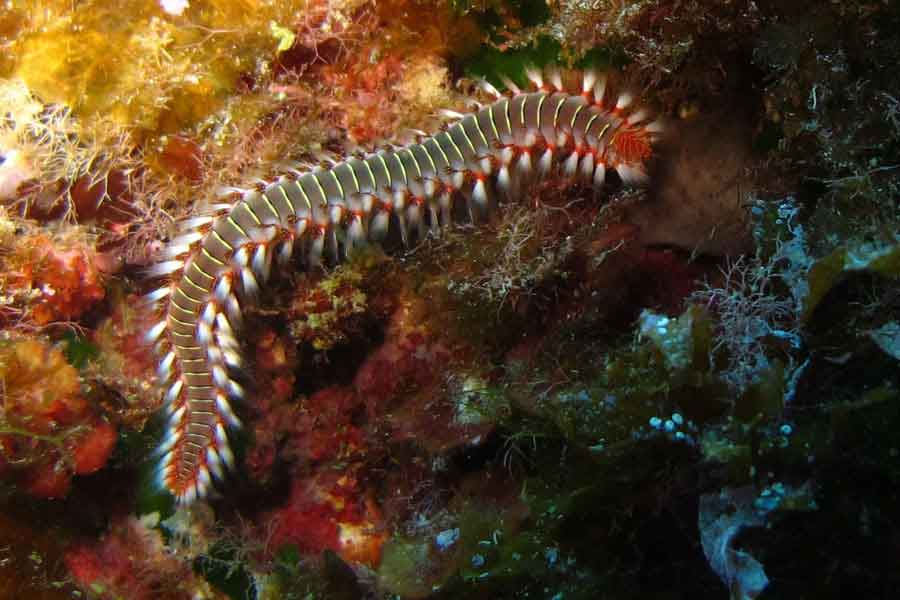
It is well known that if we impale a worm on a fishing hook, fish will be extraordinarily attracted to it and bite the deadly trap. So how can there be worms in the sea?
The only way this can happen is if the worm has developed a completely original defense mechanism that keeps fish away from it. Such is the case with the fireworm (Hermodice carunculata). This beautiful animal, which can reach a wingspan of 35 centimeters, has an innumerable amount of soft, fluffy-looking white bristles along its sides. However, these bristles are actually hard, rigid, pointed, and hollow, filled with a highly irritating venom. The bristles penetrate the flesh of any fish that tries to bite the worm, breaking off in the wound and releasing the venom into the predator’s tissues. This venom cannot kill the attacker but can cause a great deal of pain. The bristle fragments will be absorbed within a two-day period without significant consequences.
The bristles are made of calcium carbonate, which gives them their intense white color. Against the fireworm’s fiery red skin background, they create a very eye-catching appearance that serves as a warning to potential predators. This conspicuous color pattern is known as «aposematic coloration,» like a bright sign that says, «Don’t touch me, I will hurt you.» Without aposematic coloration, fish would constantly attack fireworms, and while they would get injured, the worm would also suffer. Therefore, the «bright sign» benefits both parties.
However, it is precisely this striking coloration that leads divers to touch a fireworm. We take them in our bare hands and pass them to our companions to share the beauty of this magnificent creature. Of course, after a few minutes, we feel the pain from the released venom and learn never to touch a polychaete worm again.
It is astonishing that a highly intellectually developed creature like humans has not learned to understand the common codes of other animals. Perhaps, at some point in evolution, we became so detached from them and focused so much on ourselves that today it is difficult for us to comprehend them.
«You cannot defend what you do not love, and you cannot love what you do not know.»

